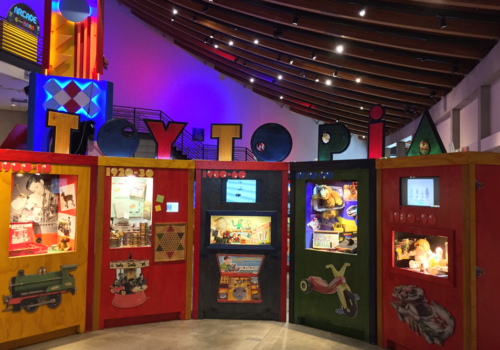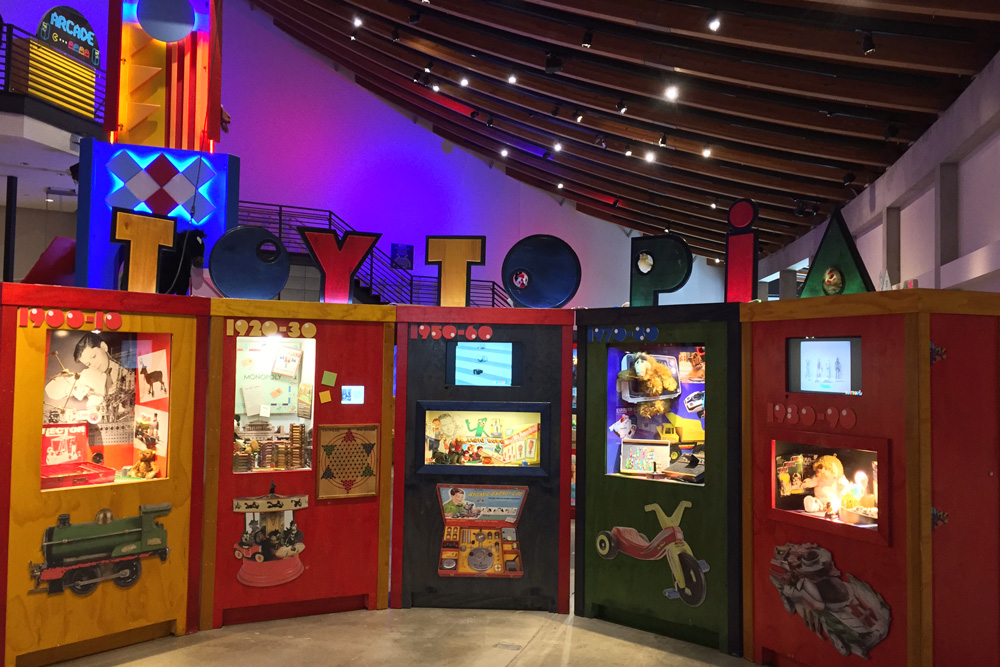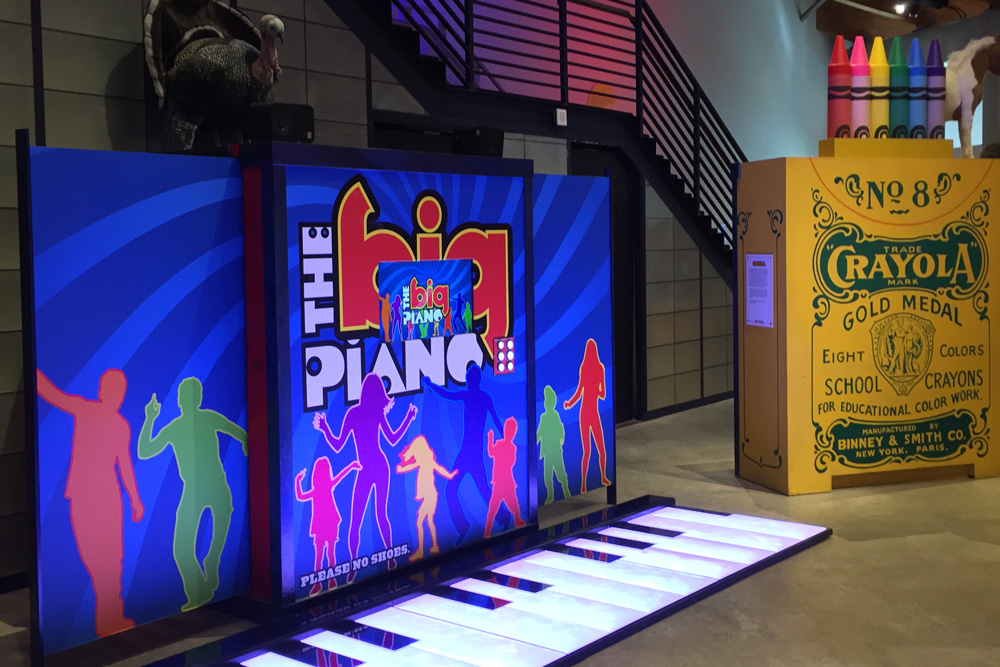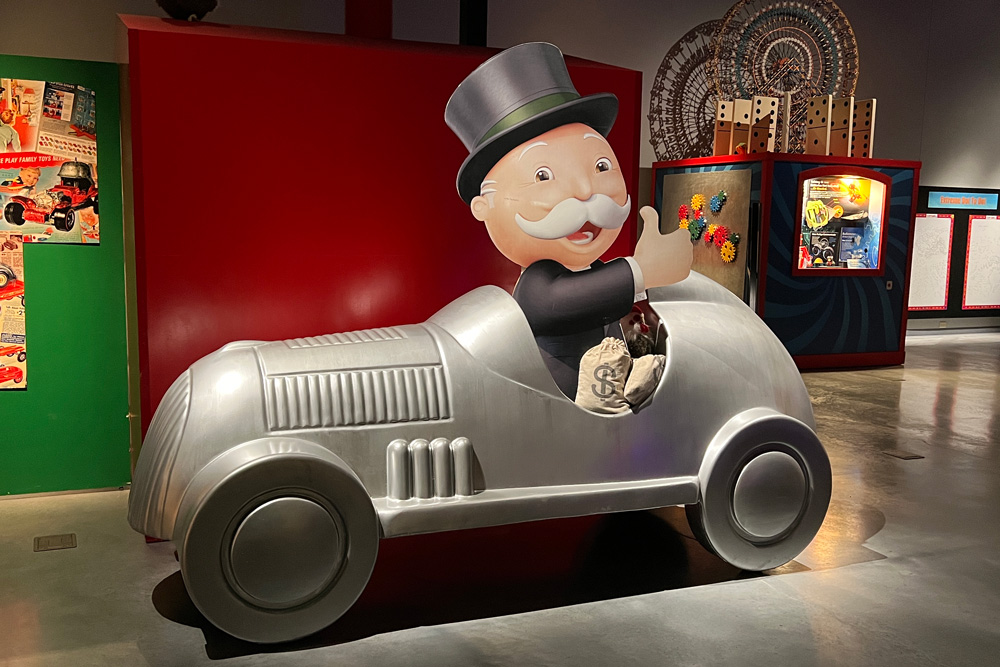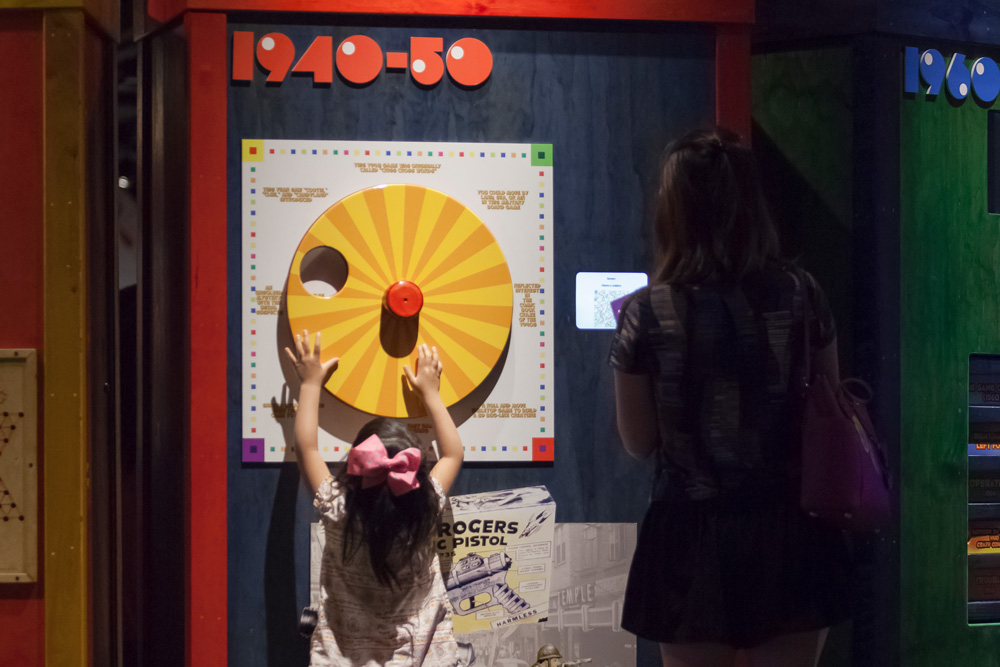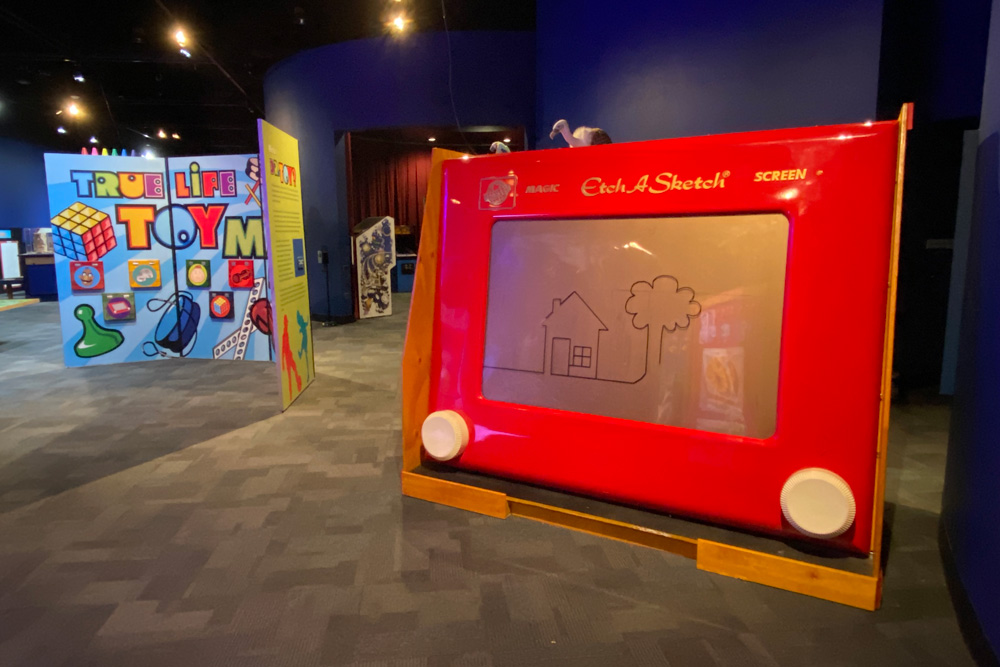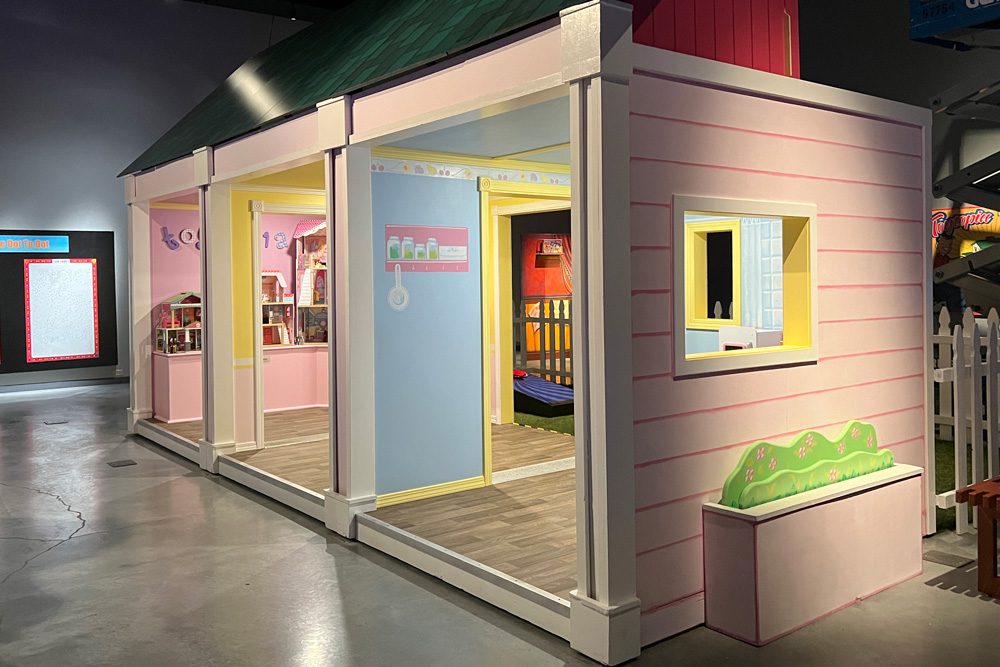Current Exhibits

TOYTOPIA
NOW – MAY 26, 2024
What toys defined your childhood? Jump ropes? Star Wars® collectibles? Easy Bake Oven? Arcade games? Whatever your favorite toy was, you’re sure to find it in TOYTOPIA, a hands-on exhibition experience developed by Stage 9 Exhibits (who also brought us last spring’s hugely popular Hall of Heroes superhero exhibit!). Prepare to enter a treasure trove of toys that connects generations. From the earliest tin toys to the hottest trends, TOYTOPIA offers fascinating history and insights into the evolution of toys throughout the 20th century.
A visit to TOYTOPIA is sure to rekindle the wonder and delight of your childhood. Featuring the world’s largest Etch A Sketch, a life-size Monopoly car and game board, a retro arcade area and a life-size dollhouse, visitors of all ages will be transported into a world of play and nostalgia, where they can discover the origins of their favorite toys, who made them and why they continue to be beloved.
TOYTOPIA showcases specialty exhibits from toymakers including: Hasbro®, Duncan Yo-Yo®, Schleich®, Breyer®, Crayola®, KNEX® (Lincoln Logs®) and many more. No matter how old you are, TOYTOPIA will make you feel like a kid again!
“So much memories in many of the toys from the past – ones I had and ones my children had.”
– Durham Museum visitor

Exhibit MUST-SEE features:
- The World’s Largest Etch A Sketch, close to 8 feet tall (great for photo ops)!
- Retro Arcade Area, with working classic games
- A life-size Dollhouse, with engaging play areas
- A life-size Monopoly Car, for a unique photo opportunity
- LEGO® Play Area/LEGO® Wall
- LEGO® Train Layout, a fanciful working electric train layout
- Our Signature Jack in The Box explores the science of toys, from Furby® to radiometers, plus magnetic interactive play walls
- Schylling Tin Toys, see how tin toys are created out of simple sheets of tin
- Keva Planks, Lincoln Logs® and brain teasers play areas
TOYTOPIA is one of the premier exhibits created by Stage 9 Exhibits. Their exhibitions have traveled internationally and been exhibited at the Ronald Reagan Presidential Foundation and Institute, Orlando Science Center, and the Pacific National Exhibition in Vancouver, Canada.
TOYTOPIA was created by Stage 9 Exhibits and is distributed by Exhibits Development Group.

PLAY CLOTHES: CELEBRATING ROSE THEATER COSTUME DESIGNER SHERRI GEERDES
NOW – MAY 26, 2024
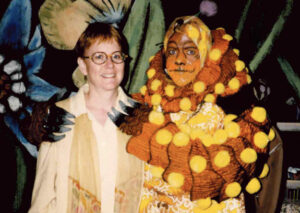 Sherri Geerdes shared her creativity with The Rose, previously known as The Emmy Gifford, for the last 40 years and retired with an impressive portfolio. She designed a plethora of costumes, wigs, hats and other fun and colorful creations to help bring children’s stories to life on stage. The Durham Museum is proud to team up with The Rose Theater to display some of the costumes and accessories designed by Geerdes for various productions throughout her tenure along with her sketches. Geerdes shares her inspiration for the many designs and the display is sure to amaze with the imagination she brought to the children’s theater.
Sherri Geerdes shared her creativity with The Rose, previously known as The Emmy Gifford, for the last 40 years and retired with an impressive portfolio. She designed a plethora of costumes, wigs, hats and other fun and colorful creations to help bring children’s stories to life on stage. The Durham Museum is proud to team up with The Rose Theater to display some of the costumes and accessories designed by Geerdes for various productions throughout her tenure along with her sketches. Geerdes shares her inspiration for the many designs and the display is sure to amaze with the imagination she brought to the children’s theater.
TAILORED BY ANN LOWE
NOW – MAY 12, 2024
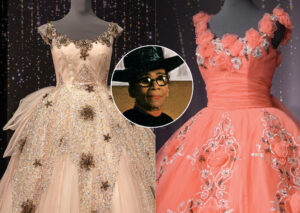
Ann Lowe photo: By Moneta Sleet Jr. for Ebony Magazine, 1966. Credit Johnson Publishing Company Archive. Courtesy Ford Foundation, J. Paul Getty Trust, John D. and Catherine T. MacArthur Foundation, Andrew W. Mellon Foundation and Smithsonian Institution.
Visitors to the Ann Lowe: American Couturier exhibition at the Winterthur Museum, Garden and Library in Delaware recently experienced a spectacular display of dresses designed by famed designer Ann Lowe, including two from the 1961 Aksarben Coronation that were on loan from The Durham Museum. The dresses, donated to The Durham Museum by Ann Lallman Jessop and Lynn Robertson Evert, are returning to Omaha this spring and visitors will have an opportunity to see them up close. For the first time, the dresses – in addition to the 1961 Aksarben Queen gown, also designed by Lowe – will be showcased at The Durham. The dresses will be on display for a limited time before they return to rest in our permanent collection.
BYRON REED EXHIBIT: EXPRESSIONS IN WRITING
NOW – AUGUST 25, 2024
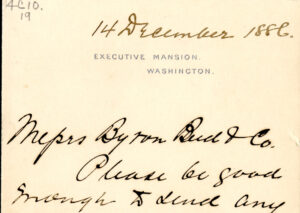 Byron Reed acquired many items for his collection throughout his lifetime and some of these included documents from historical figures or those who experienced historic events. The authors range from royalty to explorers to early colonists. This exhibit will feature a selection of documents from Reed’s collection, along with historical and biographical context for each. In addition, we will step into the world of “graphology,” which theorizes that a person’s handwriting gives insight into their personality. Local handwriting analyst Rolando Garcia provides a reading of each document with brief observations he made when studying the writing style.
Byron Reed acquired many items for his collection throughout his lifetime and some of these included documents from historical figures or those who experienced historic events. The authors range from royalty to explorers to early colonists. This exhibit will feature a selection of documents from Reed’s collection, along with historical and biographical context for each. In addition, we will step into the world of “graphology,” which theorizes that a person’s handwriting gives insight into their personality. Local handwriting analyst Rolando Garcia provides a reading of each document with brief observations he made when studying the writing style.
PHOTO EXHIBIT: MULEHEAD RANCH
NOW – JULY 14, 2024
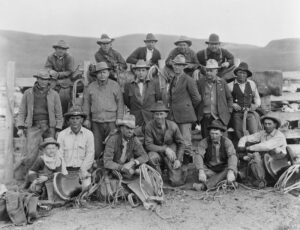
The Durham Museum Photo Archive, Bostwick-Frohardt Collection/KM3TV, 1922, BF1176-501
As westward settlement expanded in the early 20th century, South Dakota experienced what became known as the Second Dakota Boom. Brothers Ernest, Graydon and Frank Jackson, Jr. entered Rosebud Reservation land in South Dakota at this time and began their business venture known as Mulehead Ranch. This exhibit features nine images from the museum’s Photo Archive representing Mulehead Ranch’s impact on the local land and culture.
This exhibition was curated by The Durham Museum Intern, Eve Aspinwall, Creighton University graduate.
ADMISSION
Adults: $15*
Seniors (62+): $12*
Military/Veteran: $12*
Children (ages 3 – 12): $8*
*PLUS TAX
Children 2 years and under FREE
Members: FREE!
BOOK YOUR TICKET »
Advance reservations are encouraged, but walk-ins are welcome.
Members, your free admission discount is applied near the end of the online registration process.
